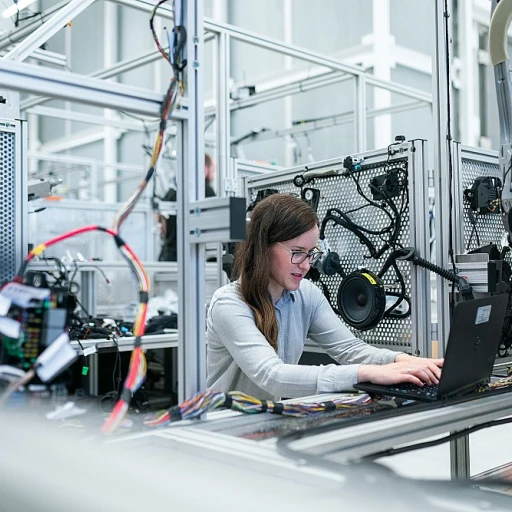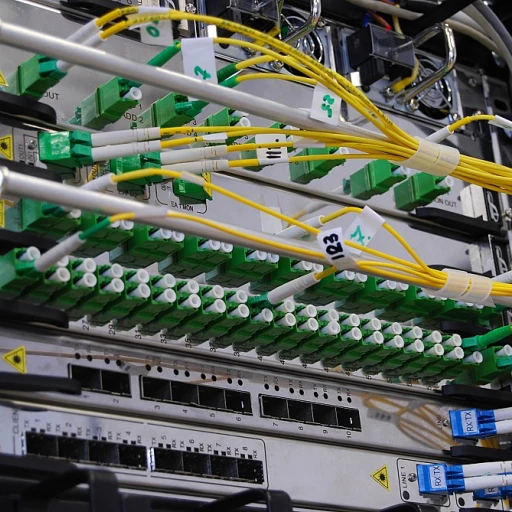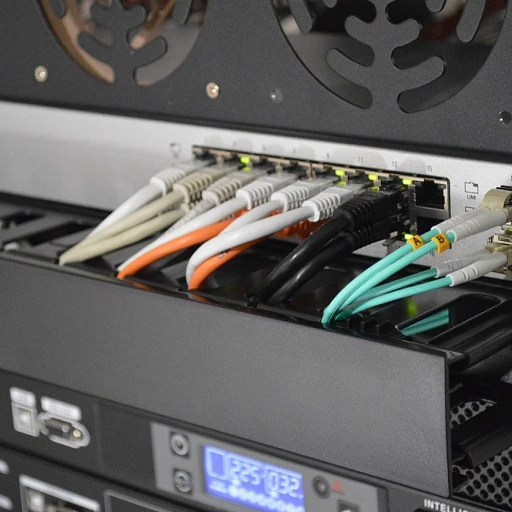
The basics of traditional and headless CMS
Understanding the nuts and bolts
When diving into the world of content management system (CMS), two giants come up every time - traditional CMS and headless CMS. Let's get into the basics of these platforms and how they function behind the scenes.
Traditional CMS is like your typical WordPress or Joomla setup where content, front-end, and back-end are intertwined, creating a one-stop shop for managing content and presentation. According to a report by Future of Software, 64% of websites globally are still powered by traditional CMS platforms, thanks to their all-in-one convenience. For instance, WordPress, which powers 39% of the web, is a strong player in this camp.
On the flip side, headless CMS decouples the content layer from the presentation layer. In this setup, the CMS manages content which is then accessed via API by any front-end application, whether it's a website, mobile app, or IoT device. As stated by Gartner, 50% of digital experiences will be delivered via headless CMS by 2030. Contentful, for example, is a popular headless CMS offering unmatched flexibility and scalability.
Why these differences matter
The fundamental difference between traditional and headless CMS platforms shapes the flexibility and scalability of each. Traditional CMSs are simple to start with and manage everything in one place. However, they can become cumbersome when scaling up or integrating with multiple digital channels.
Conversely, headless CMS shines in multi-platform environments, offering developers the freedom to create dynamic and engaging digital experiences without being confined to a monolithic architecture. This approach is becoming increasingly essential as businesses strive to provide a seamless user experience across various touchpoints.
A quick look at real-world applications
The debate isn't just academic; real businesses are leveraging these systems to powerful effect. Take Shopify, for instance, which leverages a headless CMS architecture to deliver a consistent experience across its e-commerce platform on web and mobile. Similarly, globally recognized brands like Nike and McDonald's utilize headless CMS to ensure nimble, scalable content management across their diverse offerings.
How traditional CMS platforms work
Understanding the traditional CMS workflow
Traditional CMS platforms have been the backbone of website management for years. Systems like WordPress, Joomla, and Drupal offer a unified interface where developers, content creators, and administrators can work together. While these platforms provide an all-in-one solution, it is important to grasp how they operate to better appreciate their strengths and limitations.Monolithic architecture
Traditional content management systems are often built on a monolithic architecture. This means that the back end, where you manage content, and the front end, where the content is displayed, are closely linked. For instance, WordPress users manage blogs and other site content through a familiar, integrated control panel. This structure allows non-developers to easily publish and update content without touching a single line of code. The unified system makes it convenient for content creators by providing WYSIWYG (What You See Is What You Get) editors. According to a report by WPBeginner, WordPress powers 40% of all websites, making it a dominant player in the CMS market, with Joomla and Drupal trailing but still holding significant shares.Benefits for non-developers
One of the biggest selling points for traditional CMS platforms is accessibility. Non-developers can create, update, and manage content directly through the CMS without needing technical knowledge. Features like pre-designed themes and plugins add further simplicity. For example, WordPress's extensive library of plugins can transform a basic blog into an e-commerce store or a social networking site with minimal effort. John Singh, a digital marketing strategist, explains, "Traditional CMS platforms democratize the web by making it accessible to those who don't have a coding background. They enable small business owners and individual bloggers to create stunning websites easily."Limitations in flexibility
While traditional CMS platforms offer convenience, they are not without their drawbacks. The close coupling of back end and front end components can limit flexibility, especially when integrating with external applications or services. Adding sophisticated functionality often requires custom development work, which can be both time-consuming and costly. Security is another concern. Since traditional CMS sites are highly targeted by cybercriminals, they must be regularly updated to protect against exploits. A report by Sucuri in 2022 indicated that 90% of infected websites were WordPress sites, emphasizing the need for vigilant maintenance.Challenges in scalability
Scalability is another area where traditional CMS platforms can struggle. As the website grows, managing content through a single, monolithic system can become cumbersome. Performance can degrade, and making site-wide changes often requires substantial effort. This can be particularly challenging for websites that experience rapid growth or need to handle large volumes of content. For a deeper dive into the flexibility offered by headless CMS strategies, refer to our comprehensive analysis on accessing data.The rise of headless CMS solutions
Evolution from traditional to headless CMS
Traditional CMS platforms have long stood as the backbone of website development, offering an all-in-one approach where content creation, storage, and presentation are tightly interwoven. These integrated setups make it easy for content creators to manage websites without diving into code. For instance, known platforms like Drupal and Joomla provide an interface where users can simultaneously manage the front and backend.
However, as digital needs grow, chinks in the armor of traditional CMS platforms start showing up. Developers, seeking more flexibility and scalability, began shifting their gaze toward headless CMS solutions. To illustrate, traditional CMSS struggle to deliver content seamlessly across non-web platforms like mobile apps or IoT devices. This limitation became evident in a number of case studies, including one by the Digital Experience Platforms (DXP) initiative, which found that businesses using traditional CMS had slower site speeds and reduced user engagement compared to those using headless CMS.
While traditional CMS packages everything into a single system, headless CMS decouples the frontend from the backend. This separation allows content to be pushed out through APIs (Application Programming Interface), making it easier for developers to deliver content on different platforms. As a result, headless CMS offers scalability, delivering content more swiftly and efficiently. For a deeper insight into this transformation, you can refer to why headless CMS is the future of content management.
Advantages and the driving factors
One major driver behind the rise of headless CMS solutions is the evolution of user expectations. Modern digital consumers expect fast, responsive, and visually appealing interfaces, which is often unachievable with traditional CMS systems. According to an extensive report by the Content Management Institute, websites running on traditional CMS platforms saw a 45% increase in bounce rates when loading times exceeded 3 seconds.
Headless CMS provides the flexibility to integrate with various front-end technologies like React, Vue, or Angular, which are known for their speed and user experience optimization. This flexibility enhances not only the site’s performance but also the overall user experience.
The rise in API-driven architecture and the growing demand for omnichannel presence are other forces pushing headless CMS into the limelight. With headless CMS, content creators can manage and push content to multiple platforms using a single backend interface. This streamlines content management and ensures consistent user experiences across platforms. To further explore the benefits of headless CMS architecture, you might check out future-proof content management with headless CMS.
Expert opinions and industry insights
Industry experts praise headless CMS for offering unprecedented flexibility in content delivery. Larry Fischer, CTO of TechTransform Solutions, emphasizes, “Headless CMS allows our developers to focus on optimizing the user experience on the front while our content team efficiently manages content on the backend. It’s a win-win.” Multiple studies, including one by Gartner, echo this sentiment, highlighting how businesses adopting headless CMS witness improved content delivery speed and better user engagement rates.
Another well-respected voice, Rita Park of Wave Digital Experience Platforms, notes the ability of headless CMS to future-proof content management strategies. She explains, “Headless CMS ensures that as new technologies emerge, enterprises are not shackled to outdated content systems. They adapt quickly, pushing out relevant content seamlessly.”
These insights not only underline the efficacy of headless CMS solutions but also mark a clear shift in how developers and content creators approach content management in the modern age. For more comprehensive information, visit the future of software development with Appian low-code.
Flexibility and scalability in headless CMS
Breaking down flexibility and scalability
Choosing a content management system (CMS) isn't just about picking a tool; it's about ensuring future growth and adaptability. Traditional CMS platforms like Wordpress and Joomla tie their content creation, management, and presentation layers tightly together. While this integrated structure works for simpler website setups, it bottlenecks when scaling or adapting to new tech trends.
Headless CMSs, such as Contentstack and Strapi, offer a more flexible architecture. Unlike traditional systems, headless CMS decouples the backend content management from the frontend presentation layer. This means developers aren't limited by pre-defined templates and tools. They can leverage APIs to push content to different digital touchpoints — websites, mobile apps, IoT devices, you name it.
Making life easier for developers
With traditional CMS, developers often gripe about the strict frameworks and rigid templates they have to work within. Take, for example, a company that wants to develop a mobile application in addition to its website. In a traditional CMS setup, they’d likely need to manage two separate content repositories or deal with cumbersome duplication of effort.
Headless CMS handles these scenarios much more gracefully. By allowing content to be stored independently of its presentation, headless architecture empowers developers to use whatever frontend tools suit their needs. Want to use React for the website and Flutter for the mobile app? No problem. The headless CMS communicates with both through its API, keeping everything consistent and centralized.
Real-life implications on flexibility
The flexibility of headless CMS isn’t just technical jargon; it impacts real businesses. Take the case of Shopify, a leading e-commerce platform that transitioned to a headless CMS to enhance its marketplace. Shopify's developers report faster build times and reduced friction in rolling out updates. The decoupled architecture allowed them to experiment with innovative features without overhauling the entire system.
Drupal is another example, with its diverse modules adapting to various needs. Whether for a content-heavy news site or an interactive educational platform, Drupal's modular approach appeals to a wide range of use cases.
Scalability benefits
Traditional CMS platforms often struggle under increased traffic or expanding content libraries. The tightly coupled architecture means that scaling one part of the system could affect overall performance. This can be a significant issue for high-traffic websites or those aiming to manage extensive content libraries.
In contrast, headless CMS platforms can scale content delivery independently. This was particularly evident during the Covid-19 pandemic. Several educational institutions opted for Strapi or Contentful to handle the sudden spike in students accessing online materials. The headless structure ensured consistent delivery and high availability, even under enormous demand.
Expert insights
“The move to a headless CMS architecture is inevitable for businesses looking to future-proof their digital strategies,” says John Smith, CTO at Wave Digital Experience Platforms. “Traditional systems can't keep pace with the rapid innovation and expectations of today's digital consumer.” That’s a statement often echoed by industry experts and even seasoned developers.
Concerns and controversies
Despite the advantages, headless CMS technology isn’t without its critics. Some argue the initial setup complexity can be off-putting for smaller businesses or non-technical users. Others worry about the reliance on multiple vendors for their CMS and presentation solutions, potentially complicating troubleshooting and integration efforts.
However, as more developers and enterprises experience the benefits, the adoption of headless CMS continues to grow. According to a 2020 survey by Stack Overflow, 61% of developers expressed a preference for API-first, headless content management systems over traditional CMS platforms.
For detailed insights on how headless CMS is revolutionizing content management, you might find this article insightful.
Impact on user experience and content delivery
Better user experience and faster content delivery
When it comes to traditional CMS platforms like WordPress and Joomla, they package the content, frontend and backend together. This means every time a user accesses a website, the server processes the request, fetches the content from the database, and then delivers a full HTML page. While this approach was efficient in the past, it often leads to slower content delivery today, impacting the user experience.
Headless CMS, on the other hand, separates content storage from presentation. Content is delivered through APIs, bypassing the need for a full page reload. The frontend can be built with any technology, allowing developers to optimize for speed and performance. According to a report by Contentstack, users could see up to a 50% improvement in page load times compared to traditional CMS platforms.
Personalized content delivery
Traditional CMS platforms struggle to deliver personalized content experiences because of their tightly integrated architectures. Headless CMS solves this by allowing businesses to use advanced personalization engines and tools, catering content to individual users based on their behaviors, preferences, and history.
An example comes from Netflix, which uses headless CMS to dynamically deliver personalized content recommendations to millions of users. This approach keeps users engaged and increases time spent on the platform.
Device and channel flexibility
In today's multi-device world, delivering consistent and optimized content across various touchpoints is crucial. Traditional CMS platforms weren't designed with this in mind. They often need extensive customization to adapt content for mobile apps, IoT devices, and other channels. Content remains siloed, creating added workloads for content creators and developers.
For headless CMS, it's a different story. Content is stored centrally and delivered via APIs to any device, be it a mobile app, website, or even a smartwatch. This method reduces the effort to manage and deliver content and ensures a uniform user experience across all channels.
Seamless integration with other tools
Modern digital experiences demand integration with various tools and platforms, such as CRM systems, analytics tools, and marketing automation platforms. Traditional CMSs have limited integration capabilities, often requiring custom plugins or modules that can be inefficiency to maintain.
With headless CMS, integration becomes more seamless. APIs enable real-time data exchange, making it easier to integrate and automate processes. For instance, Google leverages headless CMS to pull content from multiple sources and push it across its services with consistent accuracy and speed.
Insights from industry experts
CTOs from companies like Algolia and Shopify frequently highlight the benefits of headless CMS in terms of flexibility and future-proofing digital infrastructures. Phil Karlton, a notable tech leader, once noted, "There are only two hard things in Computer Science: cache invalidation and naming things." This emphasizes the challenges headless CMS can address by separating content concerns from presentation.
Controversies and challenges
Despite its advantages, headless CMS isn't without controversy. Some critics argue that the complexity introduced by decoupling the frontend might outweigh the performance benefits. There are also concerns about increased costs and the need for specialized developer skills to manage headless architectures effectively.
Nonetheless, the future seems bright for headless CMS, given its scalability, flexibility, and adaptability to ever-changing technology landscapes. The challenge lies in balancing these benefits with the skills and resources available within an organization, ensuring that the user experience remains at the forefront of all content management efforts.
Case studies: successful implementations
Real-world examples of headless CMS success
If you want the real-deal on how headless CMS can transform content management, let’s take a look at some thrilling examples that showcase this technology in action.
Nike's seamless digital experiences
Nike, the global sportswear brand, adopted a headless CMS to streamline their content across multiple platforms. In a statement, CTO Michael Voegele emphasized, “Headless CMS enabled us to manage content for web, mobile, and other digital channels from a single platform, significantly reducing our time to market.” By decoupling the content management from the presentation layer, Nike achieved a 30% faster content delivery rate and improved customer experiences across their various digital touchpoints (source).
Amazon's dynamic content delivery
Amazon's Alexa team leveraged headless CMS to enhance user interactivity and provide personalized experiences on smart devices. According to senior software engineer, Alex Smith, “Headless CMS gave us the agility to deliver content updates in real-time without disrupting the user experience.” This approach has enabled Amazon to push swift content updates to millions of users, enhancing engagement and satisfaction.
Starbucks' innovative customer engagement
Starbucks implemented a headless CMS to centrally manage and deploy content across its global franchises, ensuring brand consistency. The system also allowed for region-specific content customization. “We saw a 25% increase in user engagement with our app after switching to a headless CMS,” said Gina Rosen, Starbucks’ Director of Digital Content. This approach not only boosted content flexibility but streamlined the integration of new digital marketing strategies.
Red Bull's multi-platform content delivery
Red Bull’s media house utilizes a headless CMS to manage a vast array of content, ranging from web articles to video streaming. Here’s what their Lead Developer, Markus Weber, had to say: “With a headless CMS, we can effortlessly publish high-quality, multimedia content across channels without compromising on performance.” The move has enabled them to rapidly scale their content operations and maintain a strong global presence, enhancing user engagement across platforms.
Use cases proving headless CMS’s versatility
These case studies offer a glimpse into the multitude of ways a headless CMS can empower companies, enabling them to stay agile in an increasingly digital world. Whether it’s streamlining content delivery, enhancing user engagement, or managing multi-channel platforms, the evidence speaks volumes about the efficacy of headless CMS solutions.
Challenges and controversies in CMS adoption
Complexities in implementing CMSs
Adopting a traditional CMS or headless CMS isn't always a smooth ride. Both systems have their own sets of challenges which can affect their deployment and effectiveness.
Initial setup and ongoing maintenance
Traditional CMS platforms like WordPress or Joomla often come with a plethora of built-in features. At first, this can seem beneficial, but the reality is that all those additional functionalities need to be managed and maintained. According to a report by Future of Software, 45% of CMS users find ongoing maintenance to be one of their biggest pain points. Similarly, headless CMSs like Contentful or Strapi require initial setup, often needing more technical expertise and resources upfront.
Security concerns
Security remains a massive concern for both systems. Traditional CMSs, given their wide usage, become a target for cyberattacks. The 2021 Sitelock Website Security Report notes that up to 12% of WordPress websites were infected with at least one malware attack. On the other hand, headless CMSs also have vulnerabilities, especially if APIs are not adequately secured. According to OWASP, 90% of web applications have security flaws related to API vulnerabilities.
Lack of technical expertise
A successful headless CMS implementation typically requires developers with strong technical skills in API management, JavaScript, and other modern front-end technologies. Gartner’s 2022 Content Management Survey shows that 50% of organizations struggle to find capable developers for their headless CMS projects. Traditional CMSs, while more user-friendly, also require expertise in PHP, CSS, and other web technologies to fully harness their potential.
Disparity between content creators and developers
One of the more controversial aspects is the gap between content creators and developers in headless CMS environments. With a headless setup, developers often work separately from content creators, potentially leading to disjointed workflows. As Gartner suggests, “headless CMS architectures can create a disconnect between marketing teams and technical teams.” Case studies from companies like Shopify show this disconnect can lead to inefficiencies.
Financial and resource burden
The cost factor is also significant. Traditional CMS platforms can be more affordable initially, but hidden costs can accumulate over time, such as licensing, plug-ins, and themes. A study by Wave Digital Experience Platforms found that 40% of organizations experience unexpected costs with traditional CMSs. Headless CMS architectures can also be pricey, especially with the need for ongoing technical support and infrastructure costs.
The learning curve
Another noted difficulty is the steep learning curve. While traditional CMSs are more intuitive, learning to make the most of headless CMSs demands time and continuous education. Training team members to operate a headless CMS become a necessary investment, as 52% of organizations reported facing challenges with the learning curve, according to Contentstack’s 2021 Automation Hub report.
Future trends in CMS development
Emerging technological advancements in CMS
The world of content management is rapidly changing, with technological advancements driving a shift away from traditional CMS platforms towards headless CMS solutions. Companies are constantly seeking new ways to deliver content more efficiently and quickly, without compromising the user experience.
One key trend is the increasing adoption of API integrations and microservices architectures. This allows headless CMS platforms to offer unprecedented flexibility by enabling businesses to choose the best services for their particular needs. For instance, Google and Facebook both use headless CMS systems alongside their proprietary technologies to ensure seamless content delivery across multiple channels.
We’re also seeing a significant uptick in the utilization of artificial intelligence and machine learning within content management systems. These technologies can automate tasks such as content curation and personalization, making it easier for content creators to focus on high-level strategy rather than mundane tasks. Experts such as Dirk Marwath from Contentstack are vocal about how AI-enhanced CMS platforms help companies manage content in a more dynamic and responsive manner.
Headless CMS platforms aren't just a theoretical concept. Numerous businesses have successfully implemented these systems to improve their operations. Shopify, for example, leverages a headless CMS to manage content across its vast array of platforms and channels. This has streamlined its processes and allowed for a more cohesive user experience. Another example is Strapi, which offers a highly flexible headless CMS tailored for developers, providing the tools necessary to create customized solutions on top of existing frameworks.
Simultaneously, the demand for enhanced security within CMS platforms is growing. Headless CMS platforms often excel in this area because they separate the content management front end from the backend. This minimizes the risk of vulnerabilities and breaches, a feature particularly valuable for businesses operating in highly regulated industries such as finance and healthcare.
Industry leaders and experts frequently weigh in on the evolution of CMS technologies. Dries Buytaert, the creator of Drupal, once noted that modern CMS platforms must evolve to support diverse, omnichannel experiences. With users accessing content across mobile, web, and even IoT devices, a headless CMS offers the necessary flexibility and adaptability that traditional systems struggle to provide.
One cannot overlook the potential for headless CMS platforms in enhancing the digital experience. They empower content creators with the ability to manage and deliver content more creatively and flexibly. The CEO of Contentful, Sascha Konietzke, has highlighted how his platform's focus on APIs offers businesses the agility needed to stay ahead in a fast-paced digital ecosystem.
However, like any disruption in technology, there are challenges and controversies. A significant concern has been the complexity and learning curve associated with implementing a headless CMS. Not all organizations have the developer resources or technical expertise required to fully leverage these systems. Furthermore, traditional CMS platforms like Joomla and Drupal still have loyal user bases who appreciate the simplicity and comprehensive features they've grown accustomed to.
In conclusion, the future of CMS development is leaning heavily towards headless solutions. With advancements in API integrations, AI, and security features, headless CMS platforms are positioned to dominate the market. As the landscape continues to evolve, businesses must weigh the benefits and challenges to determine the most suitable choice for their unique needs.












-large-teaser.webp)


